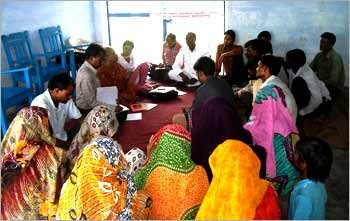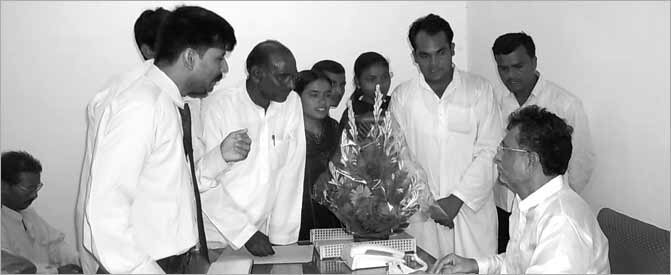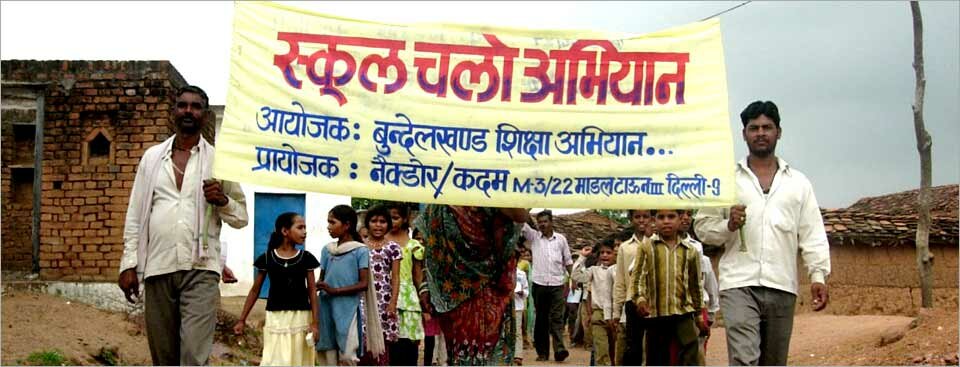Bundelkhand Initiative
The largest socially excluded group forming about 4% of the world population live in India. Popularly known as Dalits – the Scheduled Castes and Scheduled Tribes comprises about one fourth of India’s total population. Based on provisional data of 2011 census, India’s current population is more than 1.21 billion and hence the Scheduled Castes and Scheduled Tribes numbers about 300 million.
Uttar Pradesh, the most populous state of India, houses more than 199.5 million people of India. Scheduled Caste and Scheduled Tribes forms 21.1 per cent and 0.1 per cent population respectively. Adjacent to the Uttar Pradesh is the Madhya Pradesh that as per the 2011 census houses 72.5 million people. 15.2 of these are the Scheduled Castes and 20.3 per cent of them are Scheduled Tribes. Both states collectively houses more than 67.5 million Scheduled Castes and Scheduled Tribes out of the total about 300 million Scheduled Castes and Scheduled Tribes in India.
 'Bundelkhand' comprises seven districts of southern part of the Uttar Pradesh and six districts of northern part of the Madhya Pradesh. These districts are Jhansi, Lalitpur, Jalaun, Hamirpur, Mahoba, Banda, Chitrakoot in Uttar Pradesh and Datia, Tikamgarh, Chhatarpur, Panna, Sagar and Damoh in Madhya Pradesh. Many people in Bundelkhand region include many more districts, but there is larger consensus on these districts being part of the Bundelkhand. This definition is also generally used by the media and civil society organisations when they refer to Bundelkhand. The Bundelkhand region within these boundaries has an area of around 70,000 sq km with an estimated population of 18.2 million in 2011.
'Bundelkhand' comprises seven districts of southern part of the Uttar Pradesh and six districts of northern part of the Madhya Pradesh. These districts are Jhansi, Lalitpur, Jalaun, Hamirpur, Mahoba, Banda, Chitrakoot in Uttar Pradesh and Datia, Tikamgarh, Chhatarpur, Panna, Sagar and Damoh in Madhya Pradesh. Many people in Bundelkhand region include many more districts, but there is larger consensus on these districts being part of the Bundelkhand. This definition is also generally used by the media and civil society organisations when they refer to Bundelkhand. The Bundelkhand region within these boundaries has an area of around 70,000 sq km with an estimated population of 18.2 million in 2011.
Bundelkhand region is one of the most backward regions in India. Region has very high poverty ratio and high population of the Dalits. This is a typical case where the relationship between the high poverty rates and the high percentage of Dalits in the population is visible.
National Confederation of Dalit Organisations (NACDOR) works with a large number of Dalit Activists in this region. In the beginning of 2009, NACDOR began to work with a Regional Dalit Right Forum, now known as the Rashtriya Dalit Mahasabha. During discussions with them, Education of the Dalits, especially of Dalit Girls was found to be critical issue requiring urgent attention.
Bundelkhand Shiksha Abhiyan (Bundelkhand Education Project)
The project addresses the Millennium Development Goal 2 related to attainment of Universal Primary Education in eight districts of Bundelkhand region spreaded over in Uttar Pradesh and Madhya Pradesh. The Project focuses on the low literacy rates in general, especially amongst Dalit children, particularly girls.
Bundelkhand Shiksha Abhiyan addresses the problems of low literacy amongst Dalits; mal-functioning of government primary schools where most of the Dalit children go for schooling; discrimination against Dalit children in these schools; lack of motivation amongst the Dalit children and their parents for primary education, due to their disempowering social status in the area.
The project addresses the problem of low literacy rates and retention in schools in Bundelkhand, especially amongst Dalit students/ girls by awareness building and sensitisation amongst the community; monitoring of the government educational infrastructure at the village level (government primary schools) through NACDOR Village Dalit Education Committee, involving the local institutions of governance (Panchayat and Panchayat Education Committee) and advocacy with government authorities, teachers and governance structures at local/state/national level. It will also empower the Dalits through strengthening of the Rashtriya Dalit Mahasabha, a regional Dalit right forum for upholding their human rights and raise a collective voice against their poverty, discrimination and for their entitlements and resource rights.

Dalit students/children, Dalit parents and Dalit CSOs in the project area are the main target groups for the project. The direct beneficiaries will be 60,000 Dalit children (including 26000 girls), 20,000 Dalit families. Indirect beneficiaries will be 200000 children and 80000 families. They were identified through discussions with local Dalit activist, Dalit children and their parents. These beneficiaries will be engaged with the project intensively in 200 villages and extensively in another 300 villages, located as clusters in the entire region.
The project will intensively intervene in 200 villages, and ripple into 300 surrounding villages, to initiate the replication effects totalling coverage to 500 villages. This initiative is expected to achieve the following changes for SCs( Dalits ) who are the most socially excluded and poorest of the poor in India’s social structure :
- Improvement in the functioning of government primary schools in the targeted villages.
- Improvement in the enrolment and retention ratio of Dalit students/girls in schools.
- Improvement in the local governance, with respect to primary education.
- Reduction in the incidences of discrimination against Dalit students in school.
- Strong voice of Dalit Civil Society emerges at the regional level in Bundelkhand.

